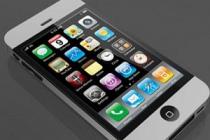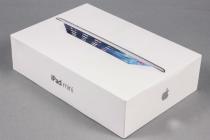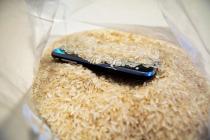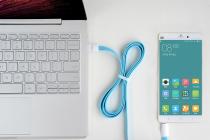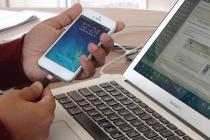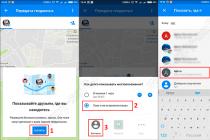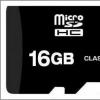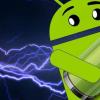Leader in compact tablets
With a slight delay after the start of worldwide sales of the iPad Air, the second novelty of Apple presented on October 22, the iPad mini with a Retina display, became available to customers. Perhaps one of the most anticipated devices of this year, the iPad mini went on sale in Russia at the same time as the rest of the world, which is a rarity. True, the official online store indicates the delivery time of 2-3 weeks, but this did not prevent us from quickly getting a new product for testing.
Since all the general information about the iPad mini with Retina display has already been given in the report from Apple's presentation, we will not repeat ourselves. We only note that this is the first update of the iPad mini, and it is all the more important that Apple has not only updated the "insides" of the device, but also equipped it with a screen of a fundamentally higher level.
- SoC Apple A7 @1.3 GHz (2 cores, 64-bit Cyclone architecture based on ARMv8)
- PowerVR G6430 GPU
- Apple M7 motion co-processor including accelerometer, gyroscope and compass
- RAM 1 GB
- Flash memory from 16 to 128 GB
- No memory card support
- Operating system iOS 7.0
- Touch display IPS, 7.9″, 2048 × 1536 (326 ppi), capacitive, multi-touch
- Cameras: front (1.2 MP, 720p FaceTime video) and rear (5 MP, 1080p video)
- Wi-Fi 802.11b/g/n (2.4 and 5 GHz; MIMO support)
- Cellular (optional): UMTS/HSPA/HSPA+/DC-HSDPA (850, 900, 1700/2100, 1900, 2100 MHz); GSM/EDGE (850, 900, 1800, 1900 MHz), LTE Bands 1, 2, 3, 4, 5, 7, 8, 13, 17, 18, 19, 20, 25, 26
- Bluetooth 4.0
- 3.5mm stereo headset jack, Lightning dock connector
- Lithium polymer battery 24.3 Wh
- A-GPS (in version with cellular module)
- Dimensions 200×134.7×7.5 mm
- Weight 331 g (our measurement)
Let's compare the iPad mini Retina to its main competitor, the 2013 Google Nexus 7, as well as the first-generation iPad mini and iPad Air.
| iPad mini with Retina display | iPad Air | iPad mini first generation | Google Nexus 7 2013 | |
| Screen | IPS, 7.9″, 2048×1536 (326 ppi) | IPS, 9.7″, 2048×1536 (264 ppi) | IPS, 7.9″, 1024×768 (163 ppi) | IPS, 7″, 1920×1200 (323 ppi) |
| SoC (processor) | Apple A7 @1.3 GHz (2 cores, 64-bit Cyclone architecture based on ARMv8) + M7 coprocessor | Apple A7 @1.4 GHz (2 cores, 64-bit Cyclone architecture based on ARMv8) + M7 coprocessor | Apple A5 @1GHz (2 cores, ARM Cortex-A9) | Qualcomm Snapdragon S4 Pro @1.5 GHz (4 Krait cores) |
| GPU | PowerVR G6430 | PowerVR G6430 | PowerVR SGX543MP2 (2 cores, 200 MHz each) | Adreno 320 |
| Flash memory | 16 to 128 GB | 16 to 128 GB | 16 to 64 GB | 16/32 GB |
| Connectors | Lightning dock connector, 3.5mm headphone jack | Lightning dock connector, 3.5mm headphone jack | Micro-USB, 3.5mm headphone jack | |
| Memory card support | No | No | No | No |
| RAM | 1 GB | 1 GB | 512 MB | 2 GB |
| cameras | front (1.2 MP, 720p FaceTime video) and rear (5 MP, 1080p video) | front (1.2 MP, 720p video support) and rear (5 MP, 1080p video recording) | front (1.2 MP) and rear (5 MP, 1080p video shooting) | |
| Internet | Wi-Fi (optional - 3G, also 4G/LTE) | Wi-Fi (optional - 3G and LTE) | ||
| Battery capacity (mAh) | 6471 | 8820 | 4440 | 3950 |
| operating system | Apple iOS 7.0 | Apple iOS 7.0 | Apple iOS 6.0 (upgrade to iOS 7.0 available) | Google Android 4.3 |
| Dimensions (mm)* | 200×134×7.5 | 240×170×7.5 | 200×138×7.2 | 200×114×8.7 |
| Weight (g) | 339** | 480 | 311*** | 294 |
| average price | T-10546224 | T-10548616 | T-8485573 | T-10451398 |
*according to the manufacturer
** the weight of the version with a cellular module is indicated
*** the mass of the version without the cellular module is indicated
**** for version with 16 GB flash and without cellular module
It is clearly seen that the iPad mini Retina is identical to the iPad Air in almost all characteristics (except dimensions). And it's incredibly cool, because the first generation iPad mini, which was released at the same time as the iPad 4, matched the characteristics of the iPad 2 in terms of characteristics. So now the iPad mini line has made a leap through two generations!
As for the comparison with Google Nexus 7, it is difficult to draw unambiguous conclusions from the data in the table. However, it is significant that the Google tablet is slightly lighter and more compact than the iPad mini Retina. But at the same time, it has a smaller screen and a plastic case.
Interestingly, despite the appearance of the new iPad mini, the previous model also remains in the company's lineup, and its cost is from 12 thousand rubles (which is 4 thousand less than the iPad mini Retina). In our article, we will also try to answer the question of how much the difference between the two iPad mini is adequate to the amount of 4,000 rubles and how relevant the first iPad mini is today.
Packaging and equipment
The packaging of the iPad mini Retina is almost the same as the packaging of the previous generation tablet.

As for the bundle, everything here is also similar to the first iPad mini: leaflets, a charger (5.1 V 2.1 A), a Lightning cable, stickers and a key to remove the SIM card cradle (in the version with a cellular module).

Design
If the update of the large iPad affected, first of all, the design, then the iPad mini just the appearance remained practically unchanged.

The all-metal body (made of anodized aluminum) pleases with both appearance and functionality, and the bezels around the screen even today, a year after the release of the first iPad mini, seem quite thin.

All buttons are metal, they are pressed with little effort. Their location is similar to the previous model. Top right - Power button, top left - 3.5 mm headphone jack. Top center - built-in microphone hole. On the right side there is a screen auto-rotate lock lever and a volume rocker.

On the model with a cellular module, there is a plastic insert in the upper part that hides the antenna. It, of course, somewhat spoils the general view, but it does not extinguish the signal.

The main difference between the new iPad mini and the old one is the increased weight (by more than 20 grams) and thickness (by 0.3 mm). Visually they are the same. The photo above shows two iPad minis from different generations. But if the difference in thickness is really not visible, then the changed mass is already palpable. However, it is quite possible to put up with this, and these changes do not have a fundamental impact on user qualities.
Screen
The main feature of the new iPad mini is the Retina display with a resolution of 2048×1536. When testing the first iPad mini, which had a resolution of 1024×768, we noted the lack of a Retina display as its main disadvantage. And now Apple has solved the problem. True, today you won’t surprise anyone with screens with such a density of dots per inch, so other characteristics come to the fore, as a rule, are not indicated in official technical specifications and are revealed only through thorough testing.
Alexey Kudryavtsev, editor of the Projectors and TV section, conducted a detailed examination of the new Retina screen.
The front surface of the screen is made in the form of a glass plate with a mirror-smooth surface, resistant to scratches. Judging by the reflection of objects, there is a very effective anti-glare filter, in terms of reducing the brightness of the reflection, it is approximately equal to the Google Nexus 7 2013 screen filter (further we compare it with it). For clarity, here are photos in which the white surface is reflected in the off screens of the tablets (from left to right: Nexus 7, iPad mini with Retina display and the old iPad mini):
Visually, the brightness of the reflection is difficult to assess due to the difference in color tone and color of the frames, but statistics from the graphic editor show that the screen on the new iPad mini is slightly lighter (average brightness value is 95) than the Nexus 7 (83), and darker, than the old iPad mini (108).
Reflection in the screen is tripled, which suggests the presence of an air gap between the surface of the matrix and the outer glass. From the point of view of image perception, this is a minus, but a screen with a separate outer glass (aka a touch panel) is easier and cheaper to repair. On the outer surface of the screen there is a special oleophobic (grease-repellent) coating (effective, but still worse than the Nexus 7), so fingerprints are removed much easier, and appear at a slower rate than in the case of ordinary glass.
With manual brightness control, its maximum value was about 410 cd / m², and the minimum - 8 cd / m². The maximum value is quite high, and, given the good anti-reflective properties of the screen, in bright daylight, the image on the screen should be clearly distinguishable. In complete darkness, the brightness can be lowered to a comfortable level. Automatic brightness control works according to the light sensor (it is located to the left of the front camera eye). At the same time, the brightness can only automatically increase - with a decrease in the level of ambient light, we did not wait for a corresponding decrease in the brightness of the screen. However, if you put the tablet into sleep mode and turn it back on, the brightness will be set in accordance with external conditions. The minimum and average levels in Auto mode depend on the initial position of the brightness slider. So, when the slider is set to maximum, automatic adjustment does not work - the brightness remains maximum regardless of external conditions. If the slider is approximately in the middle of the scale, then in bright light (corresponding to illumination on a clear day outdoors, but without direct sunlight - 20,000 lux or a little more), the maximum brightness is 410 cd / m², in an office lit by artificial light (approximately 400 lux ) - 200 cd / m² (normal), in the dark - 150 cd / m² (too much). If the slider is at its minimum, then under the above conditions, the values are: 410, 70, 8 cd/m². Thus, this function works adequately at some average and slightly below average brightness adjustment positions. At the extreme initial positions of the slider, the brightness is either always maximum, or it decreases too much in the dark. At any brightness level, there is practically no backlight modulation, so there is no screen flicker.
This tablet uses an IPS type matrix. Micrographs show a typical IPS sub-pixel structure:
The screen has good viewing angles without hue inversion and without significant color shift even at large deviations of the gaze from the perpendicular to the screen. For comparison, here are photos in which the screens of the Nexus 7 (pictured above) and the new iPad mini (bottom) display the same images, while the brightness of both screens is set to about 200 cd / m². Picture perpendicular to the screens:
And a white field in the same conditions:
Now at an angle of about 45 degrees to the plane and to the side of the screen:
It can be seen that the colors did not “float” on both tablets.
And a white box at an angle:
The brightness at an angle for both tablets decreased equally (about four times, based on the difference in shutter speed), but the color tone did not change much.
The black field, when deviated diagonally, is lightened weakly and acquires a red-violet hue or remains almost neutral gray. A photo from the Nexus 7 for comparison shows this (the brightness of both tablets is the same!):
And along the other diagonal:
It can be seen that the new iPad mini has a different color tone of the black field depending on the diagonal, but its brightness is the same or slightly lower than the black brightness of the Nexus 7 at the same angle.
When viewed perpendicularly, the uniformity of the black box is very good, since in fact only along one edge you can see some hints of areas with increased black box brightness:
The black uniformity of the Google Nexus 7 is worse, but it has better black depth in the center of the screen. Indeed, the contrast (approximately in the center of the screen) of the new iPad mini is not the greatest - about 790:1. The response time for the black-white-black transition is 22 ms (13 ms on + 9 ms off). The transition between 25% and 75% grayscale (according to the numerical value of the color) and back takes a total of 34 ms. The gamma curve constructed from 32 points did not reveal a blockage either in the highlights or in the shadows, and the approximating exponential function turned out to be 2.22, which is slightly higher than the standard value of 2.2, while the real gamma curve deviates little from the power dependence:
The color gamut is noticeably narrower than sRGB:
Apparently, the matrix filters mix the components to each other, and the spectra confirm this. This technique allows you to increase the brightness of the screen with the same energy consumption for backlighting. As a result, the colors of images - drawings, photographs and films - oriented to the sRGB space (and the vast majority of them) have slightly reduced saturation. You can’t tell from the above photos, as the camera slightly increases the color saturation.
The balance of shades on the gray scale is very good, since the color temperature is close to the standard 6500 K and the deviation from the blackbody spectrum (delta E) is significantly less than 10, which is considered an acceptable indicator for a consumer device. At the same time, the variation in color temperature and delta E is small, which also has a positive effect on the visual perception of color balance. (The dark areas of the gray scale can be ignored, since the color balance does not matter much there, and the measurement error of color characteristics at low brightness is large.)
The brightness adjustment range of the iPad mini Retina screen is quite wide, and the anti-glare filter is very effective, which allows you to comfortably use the tablet both on a sunny summer day outside and in complete darkness. There is automatic brightness adjustment, and it works more or less adequately, but only to increase, which will force the user to either set the brightness manually, or force the brightness to go down, putting the tablet into sleep mode and turning it back on. However, for sure, all Apple tablet users are already accustomed to this feature. The screen's strengths include an effective oleophobic coating, a standard gamma curve, very good color balance and excellent black stability when viewed from perpendicular to the screen surface, as well as excellent black field uniformity. It was strange to find that the color gamut is still less than sRGB, but this tablet must have at least one drawback! ..
In terms of software, the iPad mini Retina has nothing fundamentally new except for the fact that it comes with iOS 7 pre-installed, while the previous model came out of the factory with iOS 6. But it can also be upgraded to iOS 7. Note also that users iPad mini Retina features popular Apple apps like Pages, Numbers, Keynote, and GarageBand for free.
Performance
Like the iPhone 5s and iPad Air, the iPad mini Retina runs on Apple's new SoC, the A7. In the articles on the links provided, we talked in detail about this SoC, so we will not repeat ourselves and go straight to the tests. In them, we were also interested in what is the difference between two iPad mini with iOS 7.0.4 installed on both devices. That is why the test results below may differ from the results that were published in the article about the first iPad mini, since benchmarks have since been updated and a new version of the OS has been released.
Let's start with browser tests: SunSpider 1.0, Octane Benchmark and Kraken Benchmark. In all cases, we used the Safari browser from iOS 7 on Apple devices, and Google Chrome on Android.
The results are interesting. The new iPad mini is about four (!!!) times faster than the first generation iPad mini, but it is slightly behind the iPad Air, although it runs on the same SoC. It can be assumed that the SoC in the iPad mini Retina regulates the power saving process a little differently and slightly reduces the CPU frequency for certain tasks. But, we emphasize, this is only an assumption. But the main Android competitors were far behind the iPad mini Retina (although, of course, they overtook the first iPad mini).
In Geekbench 3 - a multi-platform benchmark that measures CPU and RAM performance - the situation repeated itself.
The layout is the same as in the browser tests. And this indicates that the results are indeed correct.
Now let's look at GPU performance. Two multi-platform benchmarks are available here: GFXBench (former GLBenchmark 2.7) and 3DMark. Let's start with the GFXBench results.
| Apple iPad mini second generation (Apple A7) | Apple iPad mini first generation (Apple A5) | Apple iPad Air (Apple A7) | Google Nexus 7 2013 (Qualcomm Snapdragon S4 Pro) | LG GPad 8.3 (Qualcomm Snapdragon 600) |
|
| GFXBench 2.7.2 T-Rex HD (C24Z16 Offscreen) | 27 fps | 3.4 fps | 27 fps | 15 fps | 14 fps |
| GFXBench 2.7.2 T-Rex HD (C24Z16 Onscreen) | 21 fps | 6.4 fps | 21 fps | 15 fps | 13 fps |
| GFXBench 2.7.2 T-Rex HD (C24Z16 Offscreen Fixed Timestep) | 25 fps | 3.5 fps | 25 fps | 14 fps | 13 fps |
| GFXBench 2.7.2 T-Rex HD (C24Z16 Onscreen Fixed Timestep) | 20 fps | 6.9 fps | 20 fps | 14 fps | 13 fps |
| GFXBench 2.7.2 Egypt HD (C24Z16) | 63 fps | 15 fps | 63 fps | 39 fps | 35 fps |
| GFXBench 2.7.2 Egypt HD (C24Z16 Offscreen) | 49 fps | 22 fps | 49 fps | 30 fps | 35 fps |
And again we see the same picture, with the only difference that now the results of both devices on the Apple A7 are exactly the same.
Here again you can see a slight loss of the iPad mini Retina to its older friend. But more striking is the difference between the two generations of the iPad mini. I can't believe that only one year separates these devices! However, the gap from Android tablets is also significant.
Thus, iPad mini with Retina display is the most productive modern tablet in the middle price segment. If you like to play 3D games and want to get a device that can be updated to the new version of the operating system at least twice, you can safely buy the iPad mini Retina. But the iPad mini of the previous generation is no longer relevant today, because for the same money (about 12 thousand rubles) you can buy a much more productive Android tablet with a Full HD screen.
Offline work
If we knew the approximate level of performance in advance (since we had already tested solutions on the Apple A7 SoC), then the situation with battery life created real intrigue. After all, now the device needs to display a picture of twice the resolution, and the dimensions of the case remain the same, so the battery cannot be greatly increased. This caused legitimate fears that the new iPad mini would be inferior to its predecessor in terms of battery life.
However, as the tests showed, these fears were in vain. The battery life not only did not decrease, but even slightly increased. Here, however, it is worth making a reservation that we tested the iPad mini of the first generation for this comparison on the latest version of the operating system - iOS 7.0.4. It is possible that on the original iOS 6 with which it is released, the result would have been a little better. But even in the current version, this is a decent duration of work - for both iPad mini.
The results are listed in the table.
Interestingly, the sensational result of the 2013 Google Nexus 7, obtained in reading mode, could not be surpassed by the new iPad mini. Before him, in general, to all other devices as to the moon. But in the other two modes, iPad mini Retina just overtakes both Android competitors.
We also note that under load, the new iPad mini heats up more than its predecessor, in which heat is almost not felt.
Camera
iPad Air is equipped with two cameras - front with a resolution of 1.2 megapixels and rear with a resolution of 5 megapixels, similar to the cameras of the first iPad mini and iPad Air. Since the iPad mini is much more capable of shooting than the larger iPad, we decided to do a full test using our smartphone camera test methodology, while also comparing the new camera quality with the first generation iPad mini and iPad Air. Filming and commentary were made by Anton Solovyov.
iPad mini Retina | |
 |  |
Good dynamic range and well processed noise. |
|
 |  |
Sharpness is not bad, but the lack of any stabilization is noticeable. |
|
 |  |
The sharpness is quite good, if desired, you can make out the number of the nearest car. |
|
 |  |
Blurring is noticeable in the corners of the frame, although the upper central part is quite sharp. |
|
 |  |
The number of the nearest car is clearly distinguishable. |
|
 |  |
At shorter shutter speeds, the situation improves markedly. Sharpness is uniform across almost the entire field of the frame. |
|
 |  |
In such scenes, the camera chooses the exposure well. |
|
 |  |
Macro photography in low light is quite good for the camera. |
|
We can say that the image quality of the iPad mini Retina camera has not noticeably changed compared to the iPad mini. Minor improvements have only affected noise processing: the noise reduction algorithm has not changed much, but visually its work has become softer, and due to this, small details are better worked out in the pictures. However, the camera is still afraid of noise and tries to work at the minimum ISO values, compensating the exposure due to the shutter speed, therefore, in low light, there is a high probability of blurring due to relatively long shutter speeds. As it turns out, relatively slow shutter speeds in this case are values from 1/40 second and above, since the iPad mini Retina camera does not have any kind of stabilization system. For example, almost all of the above shots were taken under the same conditions, each in triplicate, and in almost all cases two out of three shots were blurred.


Lighting

As you can see from the graph, in terms of relative resolution, the iPad mini Retina camera is not that far behind the iPad mini camera and almost caught up with the iPad Air camera. However, after a detailed examination of the images of the booth, it becomes clear that the iPad mini Retina is still a significant step forward compared to the iPad mini. It is also worth noting that the camera's angle of view has become slightly smaller, despite the same nominal focal length value specified in EXIF. Despite the fact that the camera has not changed much, now it looks modified. There are still some points that I would like to improve, but these are rather exclusively software limitations.
Of the characteristic features of the camera, one can single out good noise reduction, good and fairly uniform sharpness in terms of plans and across the field, and a reasonable choice of exposure.
In general, the quality of the camera shots is decent, especially for a tablet, despite the low resolution. There are probably no obvious shortcomings in the camera, however, the lack of a flash significantly limits its scope. However, it is quite suitable for artistic or documentary shooting in appropriate lighting.
conclusions
The last iPad mini evoked mixed emotions: the form factor seems to be interesting (the screen is more than 7 inches, but the case can be wrapped around with one hand in a vertical orientation), but the low resolution of the display spoiled the whole impression. This was especially noticeable if you used a large iPad with a Retina screen. After it, working with the iPad mini was just physically uncomfortable.
And now Apple has released the second version of the iPad mini - and here it has not only corrected the situation with the screen resolution, but also radically increased the performance of the device. At the same time, the price remained quite attractive, and the battery life and dimensions remained practically unchanged.
Thus, the choice is no longer between "large and modern device" and "compact, but outdated." Now you have to choose exclusively between the two diagonals of the screen and, accordingly, the dimensions of the tablet (which, however, do not affect the thickness). If you prefer a more compact format, plan to regularly take the tablet with you on trips, use it in transport, then you can safely take the iPad mini Retina. It's a bit more expensive than Android tablets of the same form factor, but it's significantly better in terms of performance.
In our opinion, the more likely competitors of the iPad mini Retina are not even tablets of a compact form factor, but tablet phones - Sony Xperia Z Ultra, Samsung Galaxy Note 3, etc. In terms of performance, they are approximately on the same level with the iPad mini Retina, in terms of screen quality are not inferior (and even surpass them in terms of pixel density per inch), but they can be used both as a tablet and as a smartphone. True, the cost of top-end tablet phones is significantly higher than that of the iPad mini, but the screen is still smaller. Therefore, the Apple product has its own specific niche, which is different from both tablet phones and compact Android tablets.
All in all, the iPad mini with Retina display is definitely recommended unless you already have an iPad Air (or are planning to). But the iPad mini of the first generation seems to us an acceptable option only on the condition that the buyer wants to get an Apple tablet as cheaply as possible, and the rest does not matter. If possible, then, of course, it is worth paying 4,000 rubles extra and getting a fundamentally more modern device. And by the way, owners of the first generation iPad mini can also safely go to stores for the new iPad mini, if financial opportunities allow. An update won't hurt at all.
At the end of the article, we bring to your attention our video review of the Apple iPad mini tablet with Retina display:
| 16 GB (+3G) | 32 GB (+3G) | 64 GB (+3G) | 128 GB (+3G) |
| Average price according to Yandex.Market | |||
| T-10546224 (T-10546225 ) | T-10546226 (T-10546227 ) | T-10546228 (T-10546229 ) | T-10548766 (T-10548769 ) |
| Offers iPad mini Retina 16 GB (+3G) according to Yandex.Market | |||
| L-10546224-5 | L-10546225-5 | ||
| Offers iPad mini Retina 32 GB (+3G) according to Yandex.Market | |||
| L-10546226-5 | L-10546227-5 | ||
| Offers iPad mini Retina 64 GB (+3G) according to Yandex.Market | |||
| L-10546228-5 | L-10546229-5 | ||
| Offers iPad mini Retina 128 GB (+3G) according to Yandex.Market | |||
| L-10548766-5 | L-10548769-5 | ||
An important parameter when buying a tablet is the battery capacity. Its volume determines the battery life. Of course, the performance of the battery depends directly on the activity of using the device. If you actively use the device and surf the Internet, then this charge retention time will differ significantly from the quiet mode of use. Mini models are well suited for those who travel a lot due to the long time of active use and compact dimensions.
Each tablet has its own battery and the corresponding amount of energy. This indicator is consistent and optimized with the rest of the contents of the device. For clarity, let's compare the performance of batteries in tablets. Here you can find the term " akb“, which stands for battery.
iPad 1 has a battery capacity of 6600 mAh with a voltage of 3.7 volts. The second iPad has a capacity of 6930 mAh and 3.8 volts. Models 3 and 4 have a battery capacity of 11560 mAh and a voltage of 3.7 volts. Air has 8827 mAh and 3.73 V.
Air 2 has a smaller volume of 7340 mAh and a voltage of 3.76 volts. iPad mini 1 is equipped with a capacity of 4440 mAh and 3.72 volts. Models ipad mini 2 and ipad mini 3 are equipped with a capacity of 6471 mAh and a voltage of 3.75. The fourth Mini has a capacity of 5124 mAh and 3.82 volts voltage. Pro model equipped with 10307 mAh battery with a voltage of 3.77.
After reviewing these volumes, you can see that the updated version does not always have more battery capacity. This is due to the fact that the increase in the active work of the tablet is carried out by optimizing the internal processes in the hardware. Also, setting up the operating system of the device contributes to the most optimal functionality.
In addition to the different amount of charge, the batteries themselves also differ. There are models that have lithium-polymer batteries installed, and there are lithium-ion ones. For example, in the fourth mini, a lithium-ion one is installed. All other lithium polymer batteries.
Based on this information, you may notice that some batteries are interchangeable for some devices. For example, for versions mini two and three. Battery replacement process for iPad 2 and other models complex. Therefore, the repair of such a part is best carried out in a certified repair service.
During conversations or work over a Wi-Fi connection, power consumption is different. On average when working via the Internet charger wasted in 10 hours. After which it is necessary charge device again. If you want to extend the work, but you do not have the opportunity to fully charge the device, you can recharge it “drip” by connecting it to the outlet for 15 minutes.

In order to recharge faster, you can use some tricks. Turn off your tablet completely. Then he will not spend energy on any processes, and energy recovery will be faster. You can also activate flight mode. This will reduce the power consumption for searching the mobile network. Such a search takes a lot of energy, especially with a bad signal.
Reconfigure the brightness setting. Remove the slider from the "auto-brightness" column and adjust to the minimum using the slider below. Backlighting the screen while the tablet is active is one of the first energy eaters. Also turn off the Wi-Fi network. Especially a lot of energy is consumed by searching for an Internet network with a low signal, tk. the device increases the search radius automatically to find a better signal.
Also connect the tablet directly to the outlet. This will allow you to replenish supplies faster than from a computer. If you are using a computer, then choose a USB port that has version 3.0. It is capable of speeding up charging up to two times, in comparison with other connectors. You can also use a Y-cable, which allows you to connect to two USB connectors and collect power through one cord to the device. It is good if you disconnect other devices from the computer while recharging.
If you can only charge the tablet from a PC, then purchase a special adapter. This is an adapter with a USB plug on one side and a tablet plug on the other. With it, you can increase the strength of the current during the replenishment of energy, which will speed up this process. Try not to use during charging ipad, this will not waste extra energy.
iPad 2 mini battery capacity
Mini-models have small dimensions and a screen, respectively. In order to illuminate the screen, you need to spend less energy compared to conventional large tablets, and therefore it will take less energy to do so. At the same time, the battery charge in the second version is 6471 mAh, which is quite enough for its size. So this planet is very convenient when traveling because of its compact size and the possibility of long battery life.
The original battery is called A1512 (6471 mAh) and is capable of 850 charge and discharge cycles. It is lightweight and compact. When replacing the battery, the one that will be installed, as a rule, has a low charge level. There is a tradition that it is necessary to discharge it to the end. With the advent of Li-Ion - Batteries do not need to do this. The battery must be fully charged before first use.
This is a mandatory rule, compliance with it allows you to optimally put the part into operation. This will allow the battery to last longer. It is better to do this: fully replenish the charge (about 6 hours of connection to the power supply) and use the energy to the end. Then charge to 100% again and use the charge to 100% again. Having made several such cycles, you can use the device as convenient.
Replacing the charging connector

A common cause of battery failure may be the wrong charging method or a faulty charger connector. In the second case, it must be replaced. The reasons why it breaks: contamination, moisture penetration, connection of non-original components, cable damage, software malfunctions.
If you find such a malfunction on your tablet, you must:
1 Take a charger that is definitely working and carry out the recharging process. If the charge arrives, then the problem is a broken charger. If not, then follow the next step. 2 Look inside the connector. If you see dirt or plaque, then remove it with a toothpick. Check the functionality of the connector. If there is no effect, then follow the next step. 3 Perform a software update and restart your tablet. If this does not help, then you need to contact the service center to diagnose and fix the breakdown.It is best to have the battery and charging connector replaced by an authorized repair shop. Entrust this problem to professionals. After all, if you want to fix the problem yourself, being not entirely competent in this area, additional breakdowns may occur. If you have a service guarantee, then after such an intervention it will no longer be valid.
I've been asked to write more educational articles about the iPad and iPhone. I am always FOR! I decided to transform the following instruction a bit and instead of the standard format there will be 10 useful facts about iPhone, iPad and Mac batteries. It seems to me that in this format the information will settle down better in the minds of readers.
Fact 1. Different devices have different guaranteed number of charge cycles!
- iPhone - 500 cycles
- iPod - 400 cycles
- iPad, Apple Watch, MacBook - 1000 cycles
This is the number of cycles after which the device battery must have at least 80% of its original capacity. Do not confuse with the guaranteed period, which for all batteries is 1 year.
It's funny that the iPhone is claimed to have two times fewer cycles than the iPad. In practice, something like this happens - people change the iPhone battery much more often.
Fact 2. A charge cycle is 100% charged
The lithium-ion battery in Apple devices does not have to be fully discharged. You can charge at any time and it will not affect battery wear. You need to count the cycles by the full 100% of the discharge. How to understand it? Will explain.
If you drain the iPhone battery from 100% to 50% for 10 days in a row, and then charge it, then you will eat (100-50) * 10 = 500% of the charge in total. 1 cycle is 100%. Therefore, you spent 5 charge cycles. If you run the battery from 100% to 0% for 5 days in a row, then you spend the same 500%, and therefore the same 5 cycles.
That is, use the phone for your pleasure and charge / recharge it at any convenient time.
Fact 3. The current battery capacity can be viewed in the Battery Life app
Here is the link in the App Store. Download from it, because in the search of the App Store you can stumble upon fake apps with the same name.
The program is shareware. To view battery wear, free functionality is enough. In the “Current Data” section, everything is clear and understandable.
Should I change the battery based on this data? My opinion is yes, but only if you are not satisfied with how the battery holds a charge. For example, the current capacity of 2100 suits me so far with the initial 2915. If it were about 1000, I would run to change the battery. How much does a battery replacement cost? It depends on the device, for example, on the site x-repair.ru, I found out that iPad Air repair to replace the battery will cost 3,000 rubles.
Fact 4. There are two phases of charging iDevices
The iPhone and iPad battery charges up to 80% very quickly. This is the so-called fast charging. Then the current automatically decreases and the battery charges more slowly up to 100%. This approach allows you to extend battery life.
Fact 4. The ideal operating temperature for iDevice is from +16 to +22 degrees
The optimum temperature for using the iPhone and iPad is from 0 to +35 degrees.
Above 35 degrees, it is dangerous to charge the device and it is undesirable to use it for a long time. If you charge at 35 degrees, then the system, most likely, at the software level, will block charging above 80%.
At high and low temperatures, the battery capacity may drop, but at low temperatures this is a temporary phenomenon, but at high temperatures, the capacity drops irreversibly.

Try not to store your iPad and iPhone at temperatures above +35 and below 0 degrees, although Apple allows storage from -20 to +45.
Fact 5. Battery life is affected by the version of iOS
It has already been proven empirically that some versions of iOS are less energy efficient. Apple recommends that you always update your system to the latest version of iOS to improve battery performance. HA HA HA three times! On the contrary, if you don’t want problems with the battery, then wait until everything is updated - read online reviews from owners of the same iPhone / iPad. For example, after the release of the first versions of iOS 9, iOS 11, and to a lesser extent iOS 10, there were complaints about the battery for several months.
Fact 6. The battery capacity of models in the line of devices both increases and decreases
Surprisingly, it is. iPad 1 had a capacity of 6600 mAh. iPad 3 and 4 have the maximum capacity among all models - 11560 mAh. The iPad Air has 8827 mAh. The iPad Air 2 has even less. But for absolutely all iPad models, approximately the same operating time is declared. This is due to the development of technology: the advent of the retina screen prompted engineers to greatly increase the capacity, and then more energy-efficient processors began to appear. It seems that Apple is starting from the operating time of the device, which should consistently give out 10 hours during normal use on a Wi-Fi network.
Fact 7. If you remove the battery in a MacBook, then the performance will drop by half
Not everyone knows this interesting fact. If the battery on the MacBook is dead and you are working from the network, then the processor speed automatically drops by half. You will feel like your macbook slows down, although it will still work. Also, the System without a working battery will not allow itself to be updated. This is Apple's protection. I recommend changing the battery.
As for the iPhone and iPad, I don't know (and don't want to know if they work on charging without a battery).
Fact 8. Modern batteries do not require calibration
For some reason, not everyone knows about this either. People buy an iPhone, iPad, Mac and start charging it to 100 percent and draining it to zero the old fashioned way. Batteries from Apple devices released since mid-2009 do not require calibration. This must be understood and remembered.
Fact 9. It is best to store a device with a lithium-ion battery half charged
- If you store it completely discharged, then the device may go into deep discharge mode and not the fact that you will charge it again. It will simply forget how to store charge.
- If you store it fully charged, the device may lose its capacity.
If you do not use the device for more than six months, then remember it sometimes and charge it at least once every six months up to 50%.
Fact 10. About covers and heating
Some types of cases contribute to the heating of the device during charging. If the battery gets very hot when charging, this is a sure sign that you need to either charge without a case or change the case.

Excess heat is detrimental to battery life.
If you are a happy iPad owner, then sooner or later you will definitely face the question of how to properly use and charge the battery on your tablet.
Let's try to figure out together how to extend the work of the heart of your device.
Battery Rules
iPad battery - how to properly use and charge your iPad
In order to extend battery life, a lot of knowledge is not required, you just need to follow a few simple rules:
- Do not use or store iPad in temperatures below 0 degrees or above 35 degrees. The optimum temperature for operation and storage of the device is from 0 to 30 degrees.
- Do not leave the iPad without a charge for a long period of time (1-2 weeks), otherwise it may not turn on.
- Be sure to use your tablet, do not let it lie idle for a long time with a full charge, this way you can save battery capacity.
- Discharge and charge your iPad to the end, at least once a month.
- Charge your device properly.
These are the five basic rules that you should keep in mind when using your tablet.
How to charge an iPad
The tablet can be charged using an adapter that connects to a 220W outlet (usually included with the device) or from a computer via a USB cable.
Charging iPad via adapter. In this case, everything is simple, we connect the iPad to the adapter, then we plug it into the socket, we wait for the device to be fully charged. It usually takes about 6 hours.

How to Charge iPad - Charging iPad with 220W Adapter
How to charge an iPad from a computer. Everything is just as simple, but there is one “but”, you can charge the iPad via USB 2.0 only in standby mode (ie, off) because the USB port does not have enough power. Charging using this method can take up to 12 hours, while your computer must be turned on.

How to Charge iPad - Charge iPad from Computer
How to properly charge ipad
According to experts of Li-ion batteries, it is better to charge the battery until it is completely discharged. The remaining charge can be 10% , and 40% , but try not to allow a smaller discharge. Confirmation of my words can be a message on the iPad at the moment when the charge remains less than 20%.
I want to draw your attention to the fact that there is a rumor that overcharging the battery has an extremely negative effect on its condition, but this is not entirely true. All well-known manufacturers have long built a special circuit into the battery, which allows you to protect it from overcharging.
Also earlier, in metal hydride batteries, an effect was observed "memory" incomplete charge, but in the current generation of batteries, this effect is very small.
iPad battery capacity
- For iPad 3 contains two batteries interconnected by a common capacity 24.8 Wh., which is about 6.613 mAh. The operating time of the tablet with this battery is approximately 10 hours.
- For iPad 4 this capacity is increased by almost 2 times and thus is equal to 42 Wh, which corresponds 11.666 mAh. Despite the large capacity of the battery, its operating time is about 10 hours, and all due to the fact that the insides of the device consume much more energy.
How to save iPad battery and extend its life?
Let's take a look at the points on how you can save battery power when using a tablet.
Display. This is the most gluttonous element that consumes the device's charge the most. You can reduce this consumption by adjusting the brightness. The brighter the display, the more battery consumption, the dimmer, the less. Thus, your task is to adjust this parameter under your eye. To do this, you need to go to "Settings" - "Brightness". A slider will appear in front of you, moving which you can change the value of this parameter.

Stay tuned for firmware updates. Try to update the firmware as soon as a new version is released, as the company is constantly working to improve certain features that in one way or another can affect battery consumption.
Turn off the 3G adapter. Turn off this adapter when you do not need it at all or there is an alternative to wi-fi. It (3G) consumes too many resources.

Turn off the Wi-Fi adapter. This will save you some of the charge. To turn off Wi-Fi go to "Settings" - "Wi-Fi" and change the position of the switch to "Off" ("Off").

Turn on Airplane Mode. If you are out of range 3G or wifi signals, then use the function "Air mode"– this will allow you to increase your battery usage savings. Go to "Settings", in the left menu, the very first item in the list, will be "Airplane mode", change the radio button to "On" ("On").

Turn off "Notifications". Over time, the iPad becomes overgrown with applications, some of them constantly send some kind of notifications to your screen. By turning them off, you can extend the battery life of your iPad. Let's go to "Settings" - "Notifications" ("Notifications") and turn off everything that we do not need.

Turn off "Location Services". Pay attention to those programs that are constantly interested in your location. Disable some of them that do not need this function at all. Let's go to "Settings" - "Location services".

Disable "Bluetooth". "Settings" - "General" - "Bluetooth" - "Off" ("Off").
Turn on auto-lock. Be sure to enable this mode. Set the values to the smallest interval "2 minutes". "Settings" - "General" - "Auto-Lock" - "Auto-Lock". This way we will force the iPad to turn itself off when we stop using it.
Turn off unnecessary sounds. For example, the sounds of the keyboard, turning on and off the device. Let's go to "Settings" - "General" - "Sounds" - "Sounds" and turn off all unnecessary.
Remove automatic mail checking and delete mailboxes that you do not use. "Settings" - "Mail, Contacts, Calendars" ("Mail, Contacts, Calendars") - "Fetch New Data", here we change the position "Push" on "Off" ("Off") and set the boot option "Manual".

If you have questions, comments or your additions, leave them in the comments.
Tricky question. How many hours does your iPad charge?
Experts from iFixit dismantled the new 9.7-inch tablet from Apple and presented the results of their work to the public. For the most part, the "insides" iPad Air 2 the same as its predecessor, and the changes made are very minor.
In particular, this is a changed location of the display cables - according to iFixit representatives, this innovation will be useful in the event of a repair iPad Air 2.
During the dismantling, some changes regarding Wi-Fi antennas and other components also became apparent. In addition, the fact that the battery is 15% smaller than that of iPad Air first generation.
 iFixit says the front fascia is stiffer than previous models iPad, making it more difficult to separate. However, after preheating it, the guys were able to detach the iPad Air 2's panel using picks without damaging the LCD screen.
iFixit says the front fascia is stiffer than previous models iPad, making it more difficult to separate. However, after preheating it, the guys were able to detach the iPad Air 2's panel using picks without damaging the LCD screen.
 According to iFixit, "the glued display is the only way to get access to the inside of the iPad." This, in turn, means that there is a risk of damage to the screen even in the case of the most ordinary repair.
According to iFixit, "the glued display is the only way to get access to the inside of the iPad." This, in turn, means that there is a risk of damage to the screen even in the case of the most ordinary repair.
 This teardown was based on a Wi-Fi-only model, so there is no data on cellular components.
This teardown was based on a Wi-Fi-only model, so there is no data on cellular components.

As follows from the video below, under the case i Pad Air 2 hides a battery with a capacity of 7340 mAh (27.3 Wh). Naturally, it is slightly weaker than the 8827 mAh (32.9 Wh) battery that the original iPad Air.
 Most likely, this is the reason for the reduced tablet activity time. True, in Apple emphasized the fact that the battery life of the novelty will also be 10 hours.
Most likely, this is the reason for the reduced tablet activity time. True, in Apple emphasized the fact that the battery life of the novelty will also be 10 hours.

Components found during disassembly that I did not talk about Apple:
- Touch ID sensor from NXP Semiconductors;
- 64-bit APL1012 A8X processor from Apple;
- F8164A3MD (two identical chips) from Elpida (Micron Technology);
- 128 GB (16 GB) NAND flash media H2JTDG8UD1BMR from SK Hynix;
- NXP 65V10 NFC module (also found in iPhone 6 and 6 Plus);
- Audio codec 338S1213 from Apple (Cirrus Logic);
- NXP Semiconductors ARM Cortex-M3 LPC18B1UK microcontroller (Apple M8 motion co-processor);
- Boosted Class D Amplifier MAX98721BEWV from Maxim Integrated;
- Chip Broadcom BCM5976;
- Texas Instruments TI48WHXDP 343S0583;
- FDMC 6683 and FDMC 6676BZ Fairchild Semiconductor chips (two chips that appeared in the iPad 2).
















